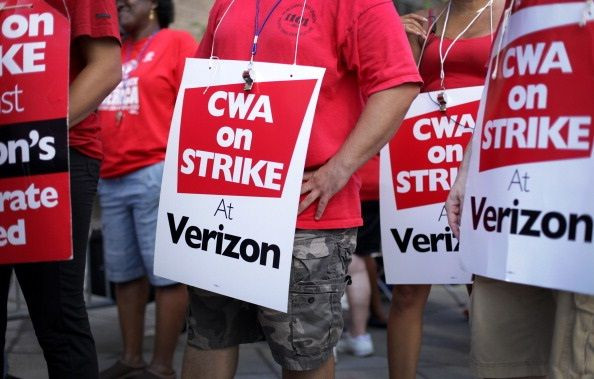May Jobs Report: Three Takeaways From The Dismal Hiring Numbers

Hiring took an unexpected nosedive in May, with just 38,000 jobs added to payrolls. That number came as a shock to Wall Street, which had projected employment gains of 164,000 for the month. At the same time, the headline unemployment rate fell to 4.7 percent from 5 percent.
The numbers reflect, in part, economic weaknesses that mounted in the first quarter finally rippling through the labor market, as well as onetime factors like the Verizon workers strike. But the data also contained some areas of concern for economists.
Here are three takeaways from May’s underwhelming jobs report.
Labor Force Shrinkage
Though the unemployment rate fell to a new low in May, it was hardly good news. The reason behind the 0.3 percentage point drop: workers dropping out.
The steady expansion of the overall labor force had been most positive trend in the labor market in recent months. But that momentum stalled in May. After a six-month period that saw 2.4 million workers enter the labor force from the sidelines, the overall population of those working or actively seeking work fell by 458,000.
Add that to a contraction of 362,000 in April, and it’s the largest two-month drop in the overall labor force since January 2011. The labor force participation rate fell by 0.2 percent to 62.6 percent after peaking at 63 percent in March.
The turnaround in labor force expansion raises questions of how much slack remains in the adult workforce — a concern voiced regularly by Federal Reserve Chair Janet Yellen, who has conditioned further interest rate hikes on continued healing of the labor market.
Adding to that slack was the number of workers employed part-time when they’d prefer to work full-time. The ranks of reluctant part-timers shot up by 468,000 in May, after holding roughly constant since November.
No Help From Revisions
It’s not just May’s numbers that disappointed. Revisions in the numbers from the previous two months added to 59,000 fewer jobs gained in March and April than previously estimated.
In April, a decent 160,000 jobs turned into a tepid 123,000. The healthy 208,000 gain in March came down to 186,000. In all, payroll gains over the past three months averaged 116,000 a month, compared to a 12-month average 200,000 jobs added per month.
Economists had expected weaknesses in consumer demand and global trade to eventually show up in jobs data, though the paltry numbers for May far undershot the estimates of most analysts.
Striking Numbers
There was some good news in the report, however. The headline number of 38,000 looks about twice as bad as hiring really was if you account for the Verizon workers strike, the largest work disruption in five years.
Employment in information services fell by 35,000, the Labor Department said, of which 34,000 workers were Verizon employees on strike. The Bureau of Labor Statistics counts picketing workers as unemployed for the time being.
Add back those striking workers — who will show up as job gains next month — and you get a payroll figure of 73,000. Not stellar, but also not a complete wash.
© Copyright IBTimes 2024. All rights reserved.






















